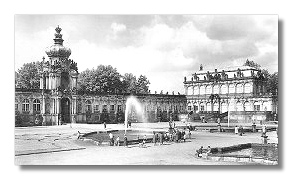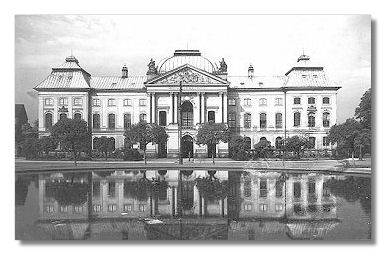
The Internet's Premier Classical Music Source
Related Links
Recommended Links
Site News
Music of the Augustan Age
Cultural Display

Architecturally the embellishment of Dresden was ambitious and significantly Italian in origin. The architect Matthaus Daniel Poppelmann was engaged and designed the Zwinger palace as the dramatic and theatrical centre of the court, with it's decorative array of structures surrounding a wide courtyard intended for all kinds of festivities. Many other building projects were completed in 1719 for the wedding festivities celebrating the marriage of the Crown Prince Friedrich Augustus. These included the enlargement of the adjacent palace, the decoration of the Taschenburg palace, the fitting out of the Turkish palace in the upper garden and new furnishings for the Dutch (later Japanese) palace.

Many newly laid out gardens, fountains, an outdoor theatre and triumphal arches were also completed. Finally the new opera house, "am Zwinger" which the King ordered to be completed in just one year for the wedding was also built by Poppelmann and decorated by Alessandro Mauro. One of the largest in Europe and representative of the elaborately decorated late Baroque style it had a capacity of between 1500-2000. The decision to allow free admission was not suprisingly widely acclaimed! The opera house remained the centre for opera in Germany until it was destroyed by fire in 1849.
Augustus the Strong and his son and successor the Crown Prince collected not only the Old Masters but also contemporary art and the work of gifted craftsman. The showcases of their galleries and museums in which the Saxon states art treasures were put on show to the public in Dresden and elsewhere overflowed with artifacts fashioned in ivory, gold, marble and porcelain created by court artists to commission as well as voluntarily to the honour of their patrons. Augustus himself designed galleries and museums in which the Saxon states art treasures were put on show to the public. Charles Burney in An 18th Century Tour in Central Europe and the Netherlands describes the contents of the Kings gallery as:
"… the first and most considerable in Europe, both for the number and excellence of the paintings it contains"
Part of his description is worth repeating if only to emphasize the immense size and quality of the collection.
"I was assured by the Cicerone, or Interpreter that the Elector was in possession of 2000 original paintings and 2400 copies" he goes on, "there are eleven capital works by Guido; eleven by Albano, twelve by Guercino, seventeen by Paul Veronese, ten by Annibal Caracci, seventeen by Vandyke, four by Parmegiano, thirteen by Nic. Poussin, eleven by Spagnolet, thirty-nine by Rubens, and fifteen by Titian, with three by Leonardo da Vinci. But the most precious pieces of this collection, are the Correggios, of which charming painter, there are six capital pictures."
If you have any comments, additions or questions I would be really pleased to hear from you!
Copyright © 1996-2000, David Charlton.












